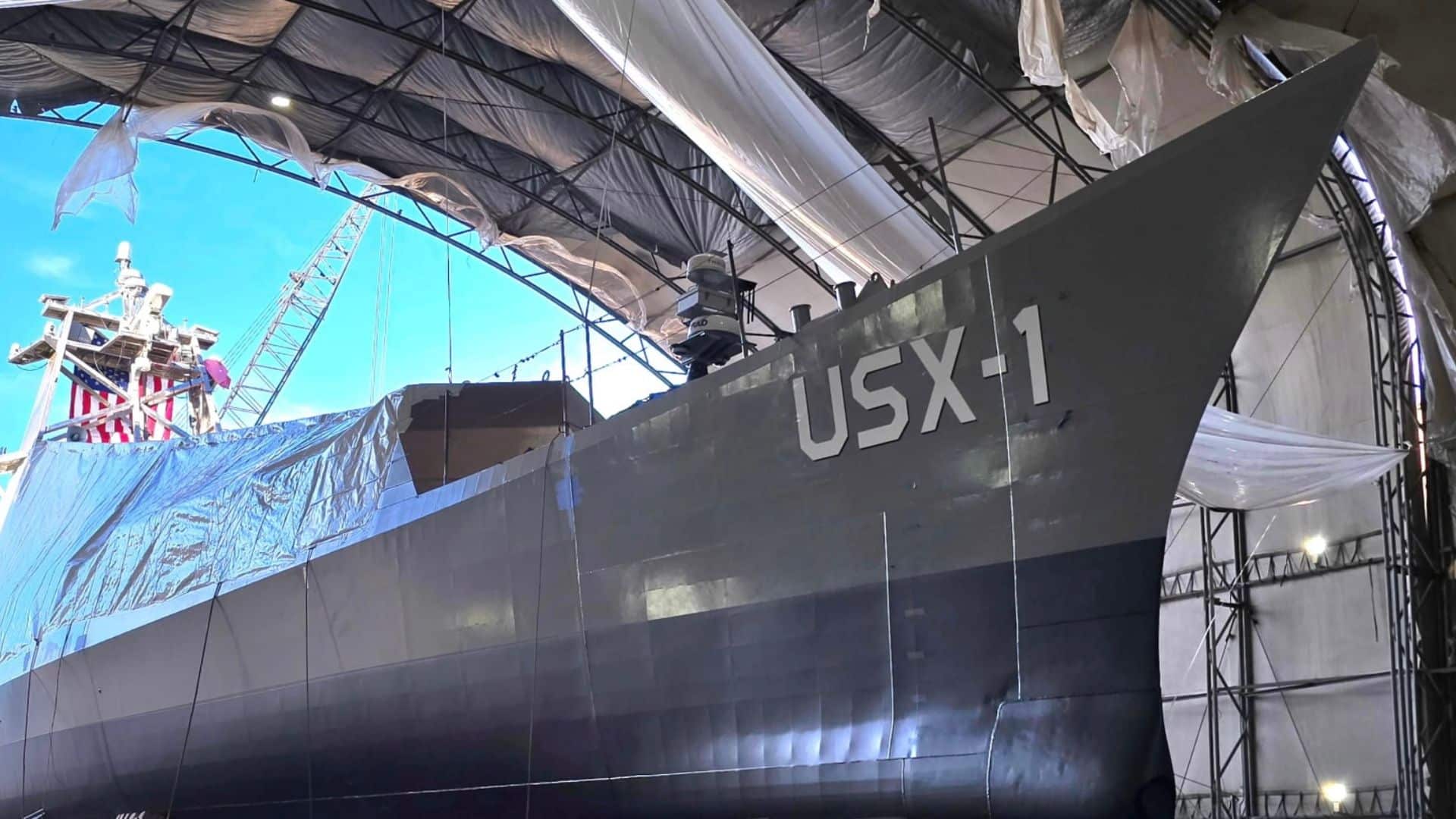US launches first-ever 240-ton ship that needs zero crew to operate
DARPA Unveils Groundbreaking Unmanned Vessel

The U.S. Defense Advanced Research Projects Agency (DARPA) has reached a significant milestone in maritime technology with the completion of the USX-1 Defiant, a prototype unmanned surface vessel (USV). This innovative vessel, part of the No Manning Required Ship (NOMARS) program, is engineered to operate autonomously on extended sea missions without any human crew on board. A DARPA official confirmed the prototype’s launch and announced upcoming at-sea trials.
World’s First 240-Ton Unmanned Ship
The USX-1 Defiant measures 180 feet in length and weighs 240 metric tons, with its construction finalized in February 2025. Following its launch, the vessel is set to undergo extensive testing in both dockside environments and open ocean conditions, culminating in a multi-month demonstration planned for spring 2025. The NOMARS initiative aims to revolutionize traditional ship design by creating an unmanned platform from the ground up, eliminating the need for human operators and the associated design constraints.
This innovative approach is expected to yield numerous advantages, including a smaller size, reduced costs, enhanced reliability for prolonged missions, superior hydrodynamic performance, and increased resilience against adverse weather and potential threats. Additionally, the focus on stealth technology aims to minimize detection risks while preventing interference and tampering. DARPA envisions a robust fleet of USVs that could be produced on a larger scale, offering efficient maritime capabilities at a fraction of the costs typically associated with manned vessels.
South Korea’s LIG Nex1 to Design Reconnaissance USV for ROK Navy
DARPA NOMARS Program
In a recent advancement, DARPA successfully conducted an at-sea refueling operation as part of its NOMARS program. This demonstration involved two unmanned vessels, the Ranger and the Mariner, which executed tasks previously assigned to the Defiant USV. This operation reinforced the NOMARS program’s primary objective: to develop vessels capable of undertaking long missions independently, even in challenging maritime environments.
While the NOMARS design emphasizes crewless operations, human involvement remains necessary during the refueling process. Personnel on the refueling vessel were required to manage the lines and hoses, highlighting certain limitations in the unmanned ships’ design. Safety considerations for crew members are crucial, especially for shorter missions where human operators must interact with the unmanned vessels.
Navigating open waters presents additional challenges, particularly regarding the movement of personnel to and from these autonomous vessels in rough seas or strong winds. However, during the recent tests, the USV Mariner successfully refueled the USV Ranger, which was equipped with technology representative of the upcoming Defiant model.
Uncrewed Operations
Although crew members were present on both vessels during the operation, it is noteworthy that no personnel were actively managing the Ranger while it was being refueled. This detail highlights the potential for the NOMARS design to operate autonomously, even if human oversight is necessary in certain situations. A DARPA spokesperson emphasized that this test marks a significant advancement, showcasing the effectiveness of the operational procedures associated with the NOMARS program.
The procedures included transferring the lead line to the refueling vessel, successfully connecting the refueling probe to the USV, and pumping water as part of the exercise. This development is the result of collaborative efforts between DARPA, the U.S. Navy, and the USVRON-1 team, who provided essential personnel and resources for this critical testing phase. As the program progresses, the implications of autonomous naval operations could significantly reshape the future of maritime strategy and defense capabilities.
